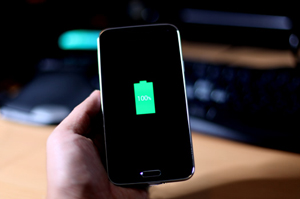Toronto, Apr 26: Scientists are developing new self-charging batteries that harvest energy from light and could put an end to our smartphone recharging woes.
 Lithium-ion batteries have allowed the rapid proliferation of mobile devices such as phones, tablets and computers. These tools however require frequent re-charging because of the limited energy density of their batteries.
Lithium-ion batteries have allowed the rapid proliferation of mobile devices such as phones, tablets and computers. These tools however require frequent re-charging because of the limited energy density of their batteries.
"With smart phones now, you can basically carry your whole office in that device, they are loaded with all sorts of applications so you need a lot of power to use it everyday and sometimes, you don't have access to a plug to recharge," said Professor George P Demopoulos of the McGill University in Canada.
This has led to the development of portable solar chargers but these hybrid devices are difficult to miniaturise due to their complex circuitry and packaging issues. To solve this problem, researchers are working on a single device capable of harvesting and storing energy using light.
The study shows that a standard cathode from a lithium- ion battery can be "sensitised" to light by incorporating photo-harvesting dye molecules.
"In other words, our research team was able to simulate a charging process using light as a source of energy," said Andrea Paolella, researcher at Hydro-Quebec in Canada. Scientists will now have to build an anode, the storage component, which will close the device's circuit, allowing energy produced by the cathode to be transferred and stored.
If they succeed, they will have built the world's first 100 per cent self-charging lithium-ion battery.





Comments
Add new comment